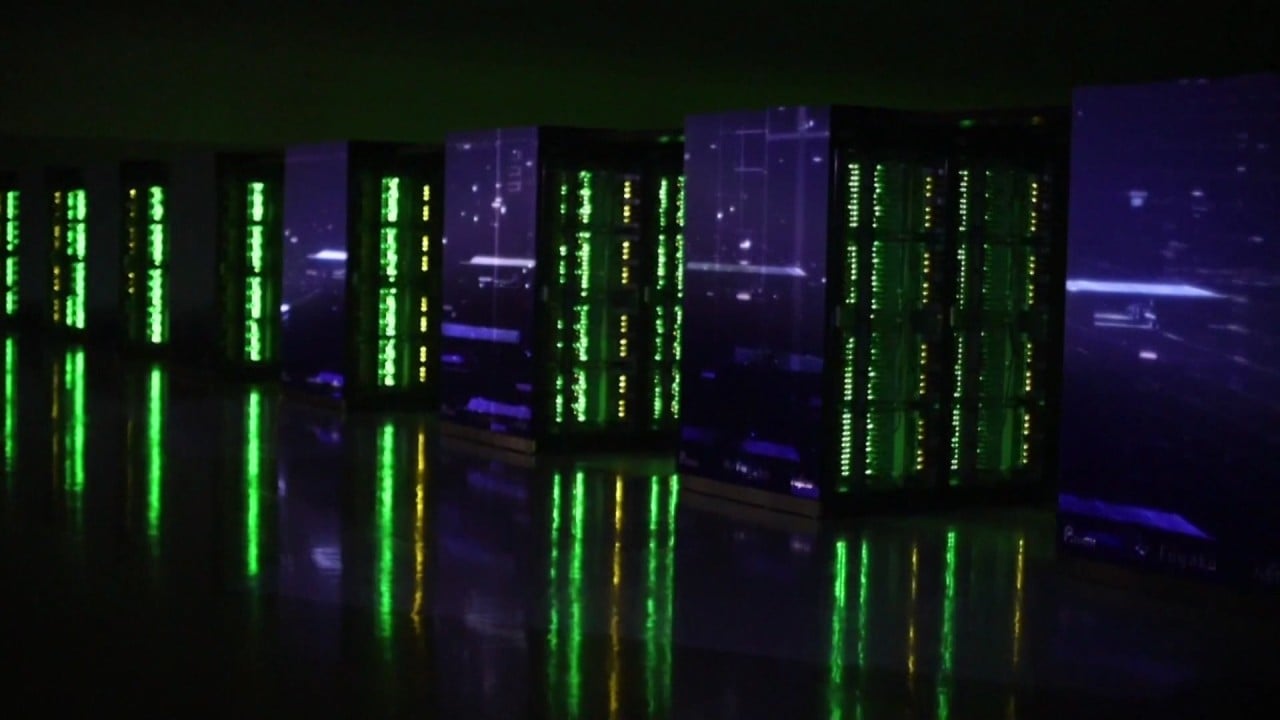
Explainer | China’s blacklisted supercomputer organisations: who are they and what do they do?
- The US added seven new supercomputing organisations to its Entity List, citing concerns that they were being used for weapons programmes
- The groups are involved in China’s biggest supercomputer projects and include the location of Sunway TaihuLight, the country’s fastest supercomputer
Supercomputers are an increasingly important strategic resource, and they have become a symbol of technological might. The US cited concerns about their use in weapons programmes as a reason for putting them on its Entity List, but they are also used for more benign purposes such as mapping human genome and weather forecasting. The machines are also now widely used in commercial applications, including massive data-crunching, energy exploration and even creating video games and artificial intelligence.
The seven organisations join five other Chinese entities related to supercomputing that the US blacklisted in June 2019: Sugon, the Wuxi Jiangnan Institute of Computing Technology, Higon, Chengdu Haiguang Integrated Circuit and Chengdu Haiguang Microelectronics Technology.
This time around, the US has targeted four of China’s seven national supercomputer centres, along with Tianjin Phytium Information Technology, Shanghai High-Performance Integrated Circuit Design Center and Sunway Microelectronics. Here is a look at what they do.
National supercomputer centres in Jinan, Shenzhen, Wuxi and Zhengzhou
The National Supercomputing Centre in Wuxi, or NSCC-Wuxi, offers high-performance computing for a wide range of research and development projects in different domains, including biomedicine, marine science, oil and gas exploration and financial analysis. It is also home to China’s fastest supercomputer, which is the fourth-fastest in the world.

The computer, Sunway TaihuLight, was developed by the country’s National Research Centre of Parallel Computer Engineering & Technology (NRCPC), located in Jiangsu province. It is jointly funded by the Ministry of Science and Technology, the Jiangsu provincial government and the Wuxi municipal government.
Sunway TaihuLight has a peak performance of 93 petaflops – a petaflop is a measurement of a quadrillion, or a million billion, calculations per second – based on the High-Performance Linpack (HPL) benchmark, a measurement of supercomputer performances, according to the Top500, a list of supercomputers compiled by researchers and last released in November.
By comparison, the world’s fastest supercomputer, Fujitsu Fugaku in Japan, is capable of 415 petaflops. The second- and third-fastest supercomputers are in the US.
NSCC-Jinan and NSCC-Shenzhen were both started in 2011. The Jinan centre is the birthplace of the supercomputer Sunway BlueLight, which peaks at 1 petaflop. With 142 research staff by the end of 2019, the centre focuses on solving the “bottleneck” problems in areas that include new energy and information security.
NSCC-Shenzhen has been offering commercial high-performance computing and cloud computing services since 2012 and 2013, respectively. In the decade it has been in service, the centre has served more than 30,000 clients in China and Southeast Asia.
China extends lead in share of top supercomputers although US still fastest
NSCC-Zhengzhou is China’s latest national supercomputing centre, going online last November. The centre provides computing and data processing services to companies, colleges and universities on its 200Gbps network. The centre’s work focuses on the digital economy, environmental governance, high-end equipment and artificial intelligence.
NSCC-Shenzhen said the centre plans to issue a statement later. The contact numbers for NSCC-Zhengzhou, NSCC-Jinan and NSCC-Wuxi were no longer in operation.
Tianjin Phytium Information Technology
This facility designs, manufactures and sells high-performance semiconductors for internet servers and computers. It was founded in 2014 with support from the municipal government of Tianjin, a city southeast of Beijing.
Tianjin Phytium has established partnerships with more than 1,600 companies and provides services to clients spanning several sectors, including government, telecommunications, banking, energy and transport. The company’s website lists some of China’s top tech companies as clients, including telecoms equipment maker ZTE, internet search company Baidu, AI chip start-up Cambricon, and surveillance equipment maker Hikvision, which was put on the Entity List in 2019.
Tianjin Phytium did not immediately respond to requests for comment.
Chengdu Sunway Microelectronics
Chengdu Sunway is responsible for supplying chips for Sunway TaihuLight. The company said China’s fastest supercomputer is also the country’s first to be built using only domestic processors. The supercomputer uses the Sunway SW26010 processor, developed by the High Performance IC Design Centre in Shanghai.
Shanghai High-Performance Integrated Circuit Design Centre
Founded in 2003, the Shanghai High-Performance IC Design Centre is located in the Zhangjiang High-Tech Park in Shanghai’s Pudong district. The centre is under the Shanghai Science and Technology Committee (STCSM), and it focuses on self-developed high-performance processors.
This includes the SW26010 chip that powers Sunway TaihuLight, according to information from the career centre Xi’an Jiaotong University. Each 64-bit processor has 260 cores, each with a clock speed of 1.45 GHz, according to a paper from the University of Tennessee. Sunway TaihuLight achieves its 93 petaflops by combining nearly 41,000 of the processors.



